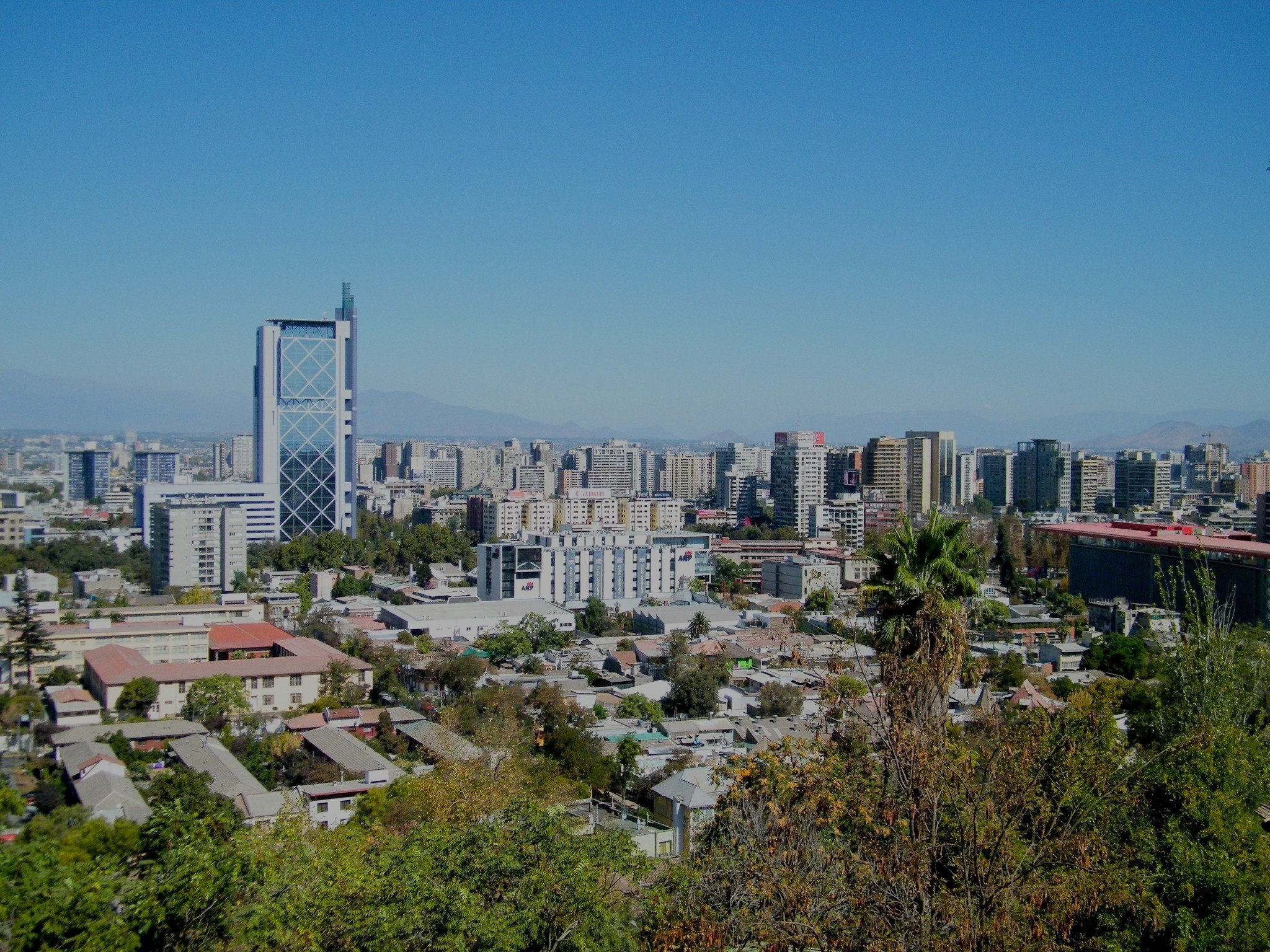
Santiago
Government Structure and Role
Population: 7 million (2017)
GDP: CLP$110 billion / US$137 million
Geographic area (sq miles/kilometers):
641.3 km² / 247.6 sq mi
Major economic sectors: mining (mainly copper), business services, personal services, manufacturing and wholesale and retail trade
Governments & Jurisdictions: 52 communes, organized into 6 administrative areas known as "provincias," encompassing the greater Santiago metropolitan region and surrounding areas
Government size – number of employees: 270
Governance on Climate Change
Key laws and strategies
In 2022, the Climate Change Framework Law was approved by the National Congress, marking a milestone in climate action in Chile. It moves towards a low carbon development, with a goal of reaching and maintaining carbon neutrality by 2050. Through the adoption of this law, the Region hopes to adapt to climate change, reduce vulnerability and increase resilience, with principals based in scientific validity, cost effectiveness, ecosystem health, equity and climate justice, citizen participation, precaution, non-regression of the law, prevention, progressiveness, transparency, coherence and flexibility. The law establishes the Ministry of the Environment as the authority on climate change with the responsibility for preparing and updating the government’s Long-Term Climate Strategy, the Nationally Determined Contribution (NDC), and the National Report on Climate Change, which includes all policies, climate change plans, programs and measures. The regional metropolitan government in Santiago is going to be the first in the nation to comply with the national regulatory framework for climate action.
Internal governance structure
Since 2021, Santiago has been undergoing a decentralization process that aims to distribute decision making authority and resources from the central government to regional authorities. The decentralization efforts are part of a broader strategy to enhance regional autonomy and address local needs. One significant step in this process was the direct election of regional governors, which began in 2021, which strengthened regional governance and increased local accountability.
The Environmental Department directly reports to both the Governor and the Regional Administrator. Within the department, there is a dedicated Climate Action Unit responsible for executing the region’s action plan and overseeing key initiatives (i.e. the Miyawaki forest project, aiming to plant 30,000 trees). The unit is actively working to develop protocols to address extreme heat conditions, with a team of 3 dedicated professionals. Other departments such as the Planning Department and the Development Industry Department also work on climate change issues.
Recent and Projected Impacts: MCAP Priority Climate Risks
Extreme Heat: Extreme heat particularly impacts water sources and security in Santiago, heavily relying on glaciers that are rapidly melting at a rate of up to two meters per year.
Wildfires: Wildfires present significant challenges, with some fires classified as blue fires, indicating their intensity. The situation is further exacerbated by a major fire in 2024 that is raging out of control. However, the central authority overseeing fire prevention primarily addresses public areas, leaving 24% of the land unprotected, half of which is privately owned.
Drought: Santiago grapples with drought and water scarcity challenges, particularly affecting areas like San Pedro and Melipilla, where people relying on local government assistance are experiencing water shortages. Despite depending on rain and snowmelt from the Andes for its water supply, the complex management of the Maipo River basin, involving 52 institutions, hinders integrated management efforts.
